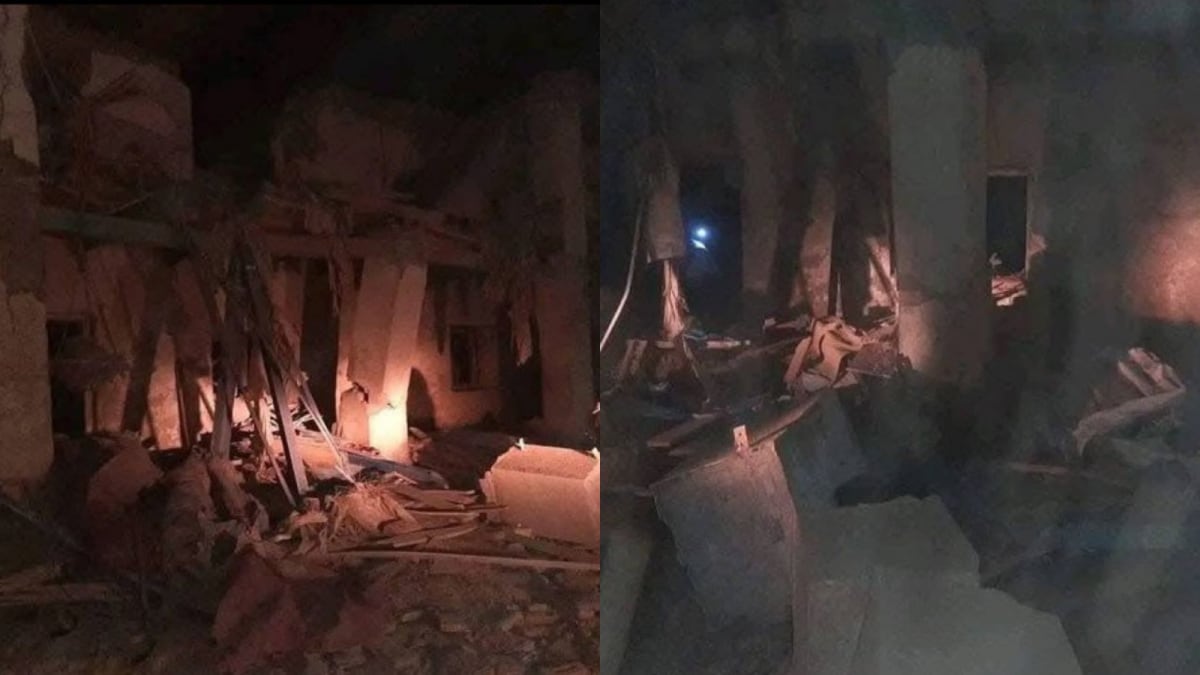Last Updated:July 11, 2025, 13:45 IST
NASA released images of star clusters NGC 460 and NGC 456 in the Small Magellanic Cloud. Hubble shows visible light, while Webb reveals infrared details.

Star clusters NGC 460 and NGC 456 in Small Magellanic Cloud. (Source: X/@NASA)
In a breathtaking cosmic reveal, NASA has released a pair of contrasting images of the same region of deep space, captured by two of the most powerful telescopes ever built – the legendary Hubble and the revolutionary James Webb. The star clusters, NGC 460 and NGC 456, located in the Small Magellanic Cloud, have once again become the centre of scientific and public fascination, offering two very different views of the same universe.
At first glance, both sets of images are visually arresting, but look closer and the differences are stark. The question naturally arises: which telescope offers the better view of the cosmos?
One Galaxy, Two Perspectives
NGC 456 and NGC 460 are open star clusters nestled inside the Small Magellanic Cloud, a dwarf galaxy orbiting our Milky Way. It is a dense zone filled with interstellar dust, gas, and billions of stars. The stars in these clusters are astonishingly young by cosmic standards; some are barely a million years old, while the oldest among them top out at just 10 million.
NASA’s recent side-by-side comparison isn’t just a showcase of technology, but a visual lesson in how we observe the universe.
The Hubble Space Telescope, operating primarily in visible light, presents the region as a glowing bluish mass, highlighting structures like gas bubbles and cavities formed by intense stellar radiation. These powerful emissions push away gas and dust, carving the interstellar medium into shapes that look like art etched in light.
But where Hubble stops, Webb begins.
The James Webb Space Telescope views the cosmos in infrared. It peels back the curtain of visible light to reveal delicate filaments of dust and gas that remain invisible to Hubble. Dust, which appears black and cold in Hubble’s view due to its opacity, glows warmly in Webb’s images as it absorbs and re-emits heat from nearby stars.
This shows that dust is not just an obstacle but is itself a part of the story of space, NASA said, underlining a shift in how astronomers understand the interstellar medium.
On July 9, NASA’s official account posted, “What a glow up! @NASAWebb gave a new look at two star clusters first captured by @NASAHubble. Originally shown as dusty blue bubbles, Webb highlights the finer inner details, illuminated by starlight." The side-by-side visual has since gone viral among space enthusiasts.
Where Stars Are Born And Die Fast
These particular clusters are of immense interest to astronomers due to the presence of O-type stars, the heavyweights of the stellar world. They are hot, massive, and live fast, dying young. Out of an estimated 400 billion stars in the Milky Way, only about 20,000 belong to this rare and short-lived category.
Such stars are considered “nuclear factories", enriching the surrounding interstellar space with heavier elements when they explode as supernovae. Clusters rich in O-type stars serve as natural laboratories for scientists to study the birth and evolution of stars.
The Small Magellanic Cloud isn’t just another dwarf galaxy; it offers a window into cosmic history. It has a significantly lower concentration of heavy elements (known as “metals" in astrophysical terms) than our Milky Way. This mirrors conditions believed to have existed in the early universe, soon after the Big Bang, when only hydrogen and helium were abundant.
By studying how gas, dust, and young stars interact in this metal-poor environment, researchers hope to understand the early mechanisms of galaxy formation, the behaviour of interstellar matter, and the effects of galactic collisions.
So Which Telescope Wins?
From a scientific standpoint, both telescopes serve different, complementary purposes. Hubble captures the universe as we would see it with our own eyes – crisp, blue, and majestic. Webb digs deeper, revealing the secrets hidden behind curtains of dust, offering an infrared vision of space’s architecture.
In other words, Hubble offers the poetry, and Webb brings the prose.
view commentsLocation : First Published:News world Hubble vs James Webb: NASA Shares Two Views of Same Star Cluster. Which One Wows You More?
Disclaimer: Comments reflect users’ views, not News18’s. Please keep discussions respectful and constructive. Abusive, defamatory, or illegal comments will be removed. News18 may disable any comment at its discretion. By posting, you agree to our Terms of Use and Privacy Policy.

 1 month ago
1 month ago












